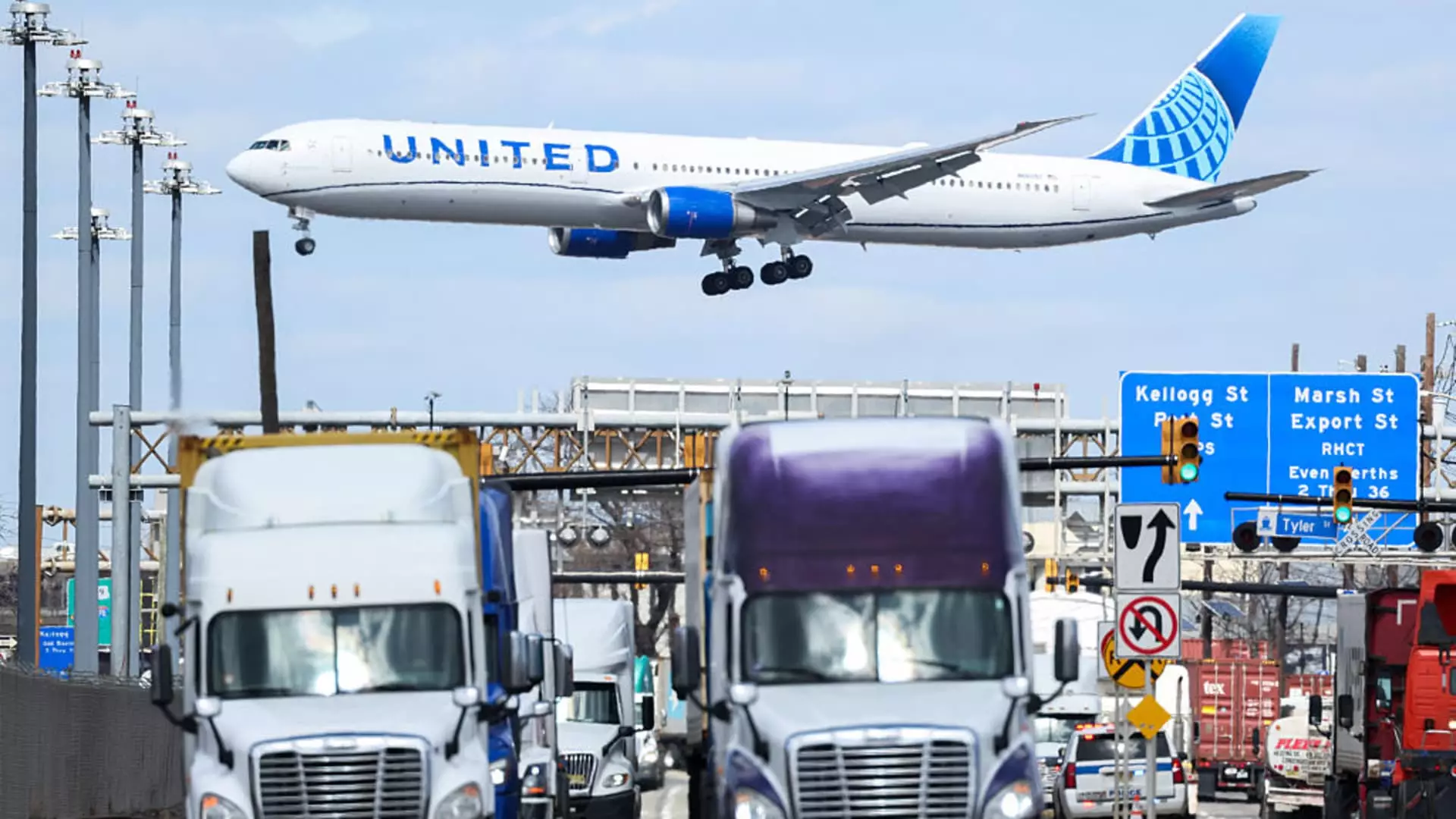As we navigate through 2023, the U.S. airline industry finds itself at a precarious juncture. United Airlines stands out, demonstrating a blend of cautious optimism and strategic acumen. Maintaining its full-year forecast amid looming recession fears highlights an inherent confidence in its operational framework. United’s leadership recognizes the macroeconomic challenges, stating, “it is impossible to predict” the economic environment with any certainty. In this landscape, the capacity to adapt and maintain profitability is no longer just a business strategy; it’s a survival imperative.
While some may argue that forecasting during economic turbulence is irrational, United has taken the unusual but necessary step of creating dual forecasts. One assumes stability, while the other accommodates a potential recession’s impact — indicating thorough preparation for diverse scenarios. It’s a commendable approach, particularly when many businesses seem ill-prepared for volatility and uncertainty.
Solid Performance Amid Challenges
Despite the economic climate, United Airlines reported a significant turnaround in its financials, achieving a $387 million profit in the first quarter compared to the previous year’s loss. Such an improvement signals sound management and resilient operational strategies. Notably, the airline’s adjusted earnings exceeded Wall Street’s expectations, showcasing its ability to balance both cost control and revenue growth effectively. Investors responded positively, reflected in a 5% stock surge in after-hours trading.
However, a more profound analysis reveals concerning trends in unit revenue for domestic flights, which dropped by almost 4%. This raises questions about the sustainability of United’s domestic travel demand. While bookings for international trips remain robust, a decline in domestic traffic might indicate deeper issues in consumer sentiment, likely influenced by rising inflation and geopolitical tensions. United’s decision to cut domestic flights by about 4% in the upcoming summer indicates a realistic understanding of current demand dynamics.
Strategic Focus on Premium Services
One fascinating aspect of United’s strategy is its pronounced emphasis on premium cabins. The airline has witnessed a remarkable 17% increase in premium-cabin bookings compared to last year, revealing an emerging consumer trend where travel quality is prioritized over affordability. This aligns with a larger shift in the market: affluent travelers are less deterred by economic uncertainty when it comes to comfort and luxury. In a time when every dollar counts, United’s pivot to high-margin services reflects a keen understanding of its clientele’s aspirations.
Yet, the volatility of consumer behavior cannot be overlooked. The common adage of “the rich getting richer” may serve as a partial shield against economic turbulence, but if wider economic dynamics lead to job losses and rising poverty levels, even premium travelers might tighten their belts. That could necessitate additional adjustments in United’s strategy, making it crucial for the airline to remain vigilant in understanding its market and adapting quickly.
Industry Collaboration and Competition
United isn’t isolated in its challenges and strategies; its rival, Delta Air Lines, is also recalibrating its growth ambitions amidst market volatility. United’s CEO, Scott Kirby, projects confidence in the airline’s multi-year growth plan as a means to thrive in any demand environment. However, the intrinsic competition within the airline sector calls for a balanced approach between innovation and cost management. Delta’s reluctance to reaffirm its full-year outlook speaks volumes about the overall industry uncertainty, which can affect collaborative efforts for systemic improvements.
If United wants to maintain its lead, it will need not only to streamline operations but also to forge partnerships that can enhance customer experience and operational resilience. Now more than ever, airlines must abandon the traditional fierce competition mentality and adopt a cooperative approach to enhance industry standards for safety, sustainability, and customer satisfaction.
As the U.S. airline industry flies through the turbulence of 2023, United Airlines’ dual-pronged strategy reflects a sophisticated understanding of market realities. Balancing between predicted stability and preparation for downturns demonstrates a willingness to confront realities head-on, a characteristic that should define a forward-thinking enterprise in today’s unpredictable economy. The question remains: can United harness these insights to maintain its ascent, or will external pressures force it to recalibrate yet again? The stakes have never been higher.

